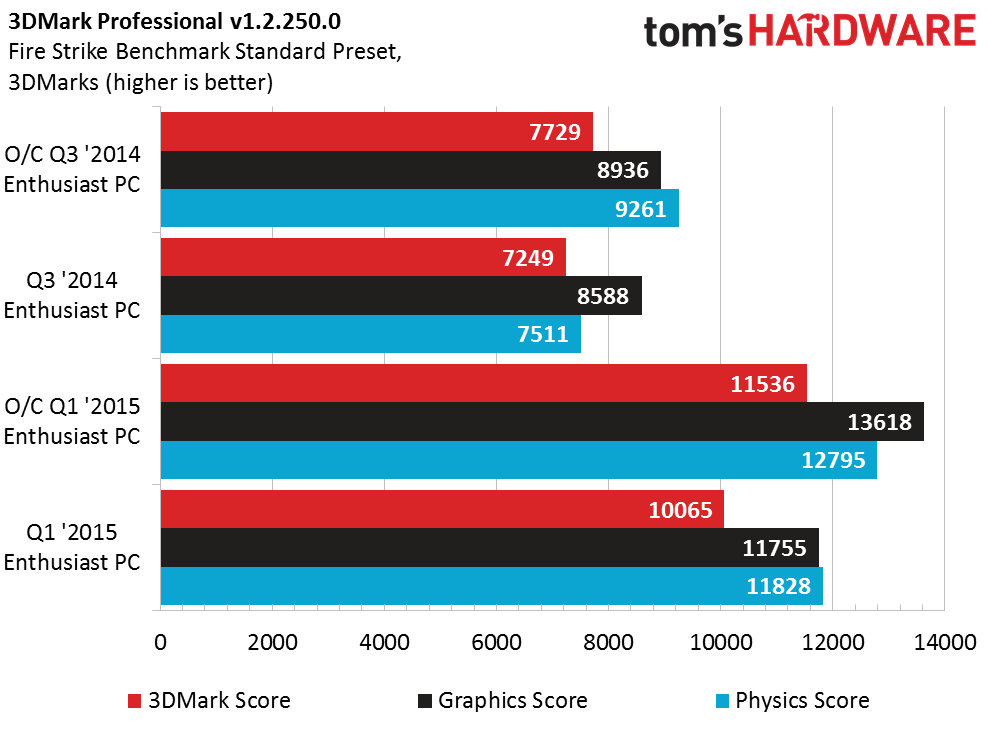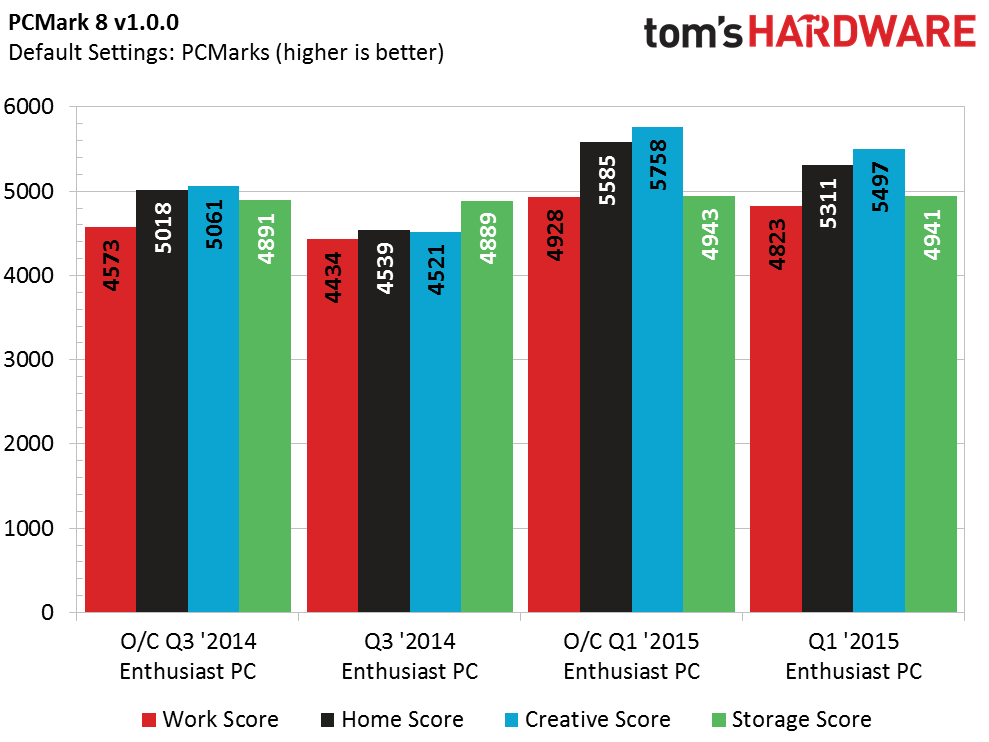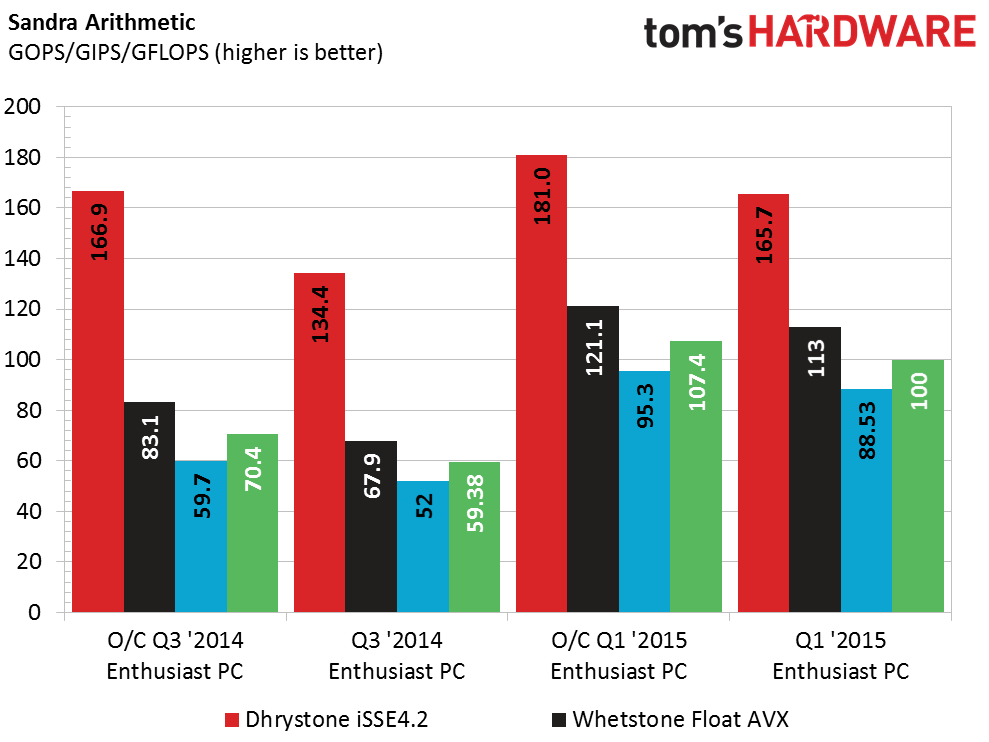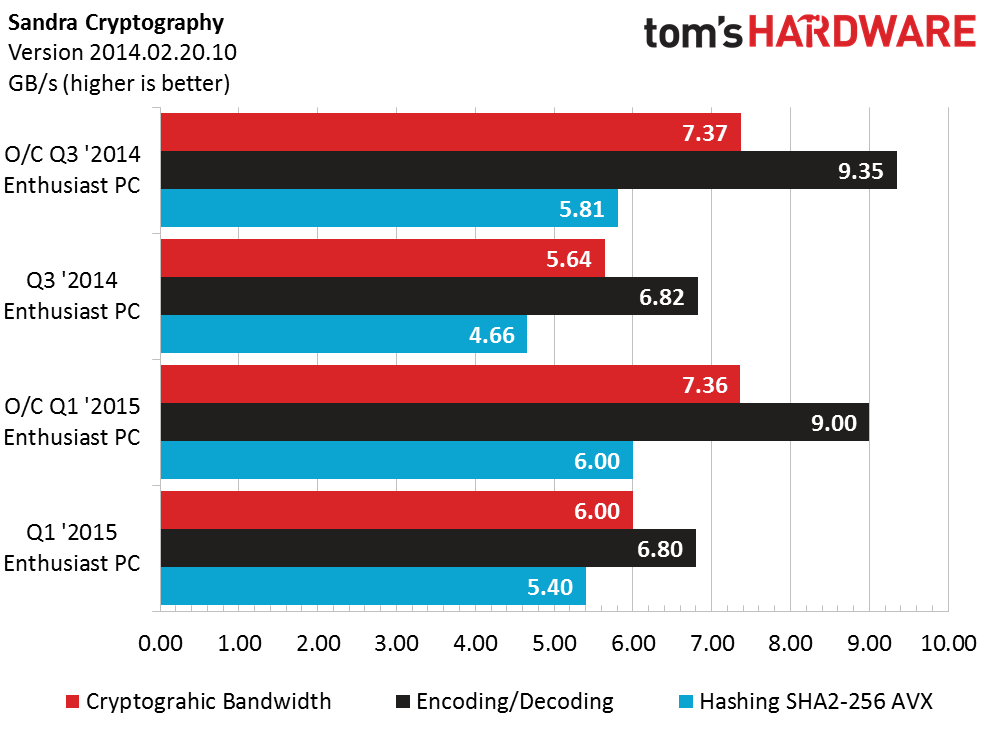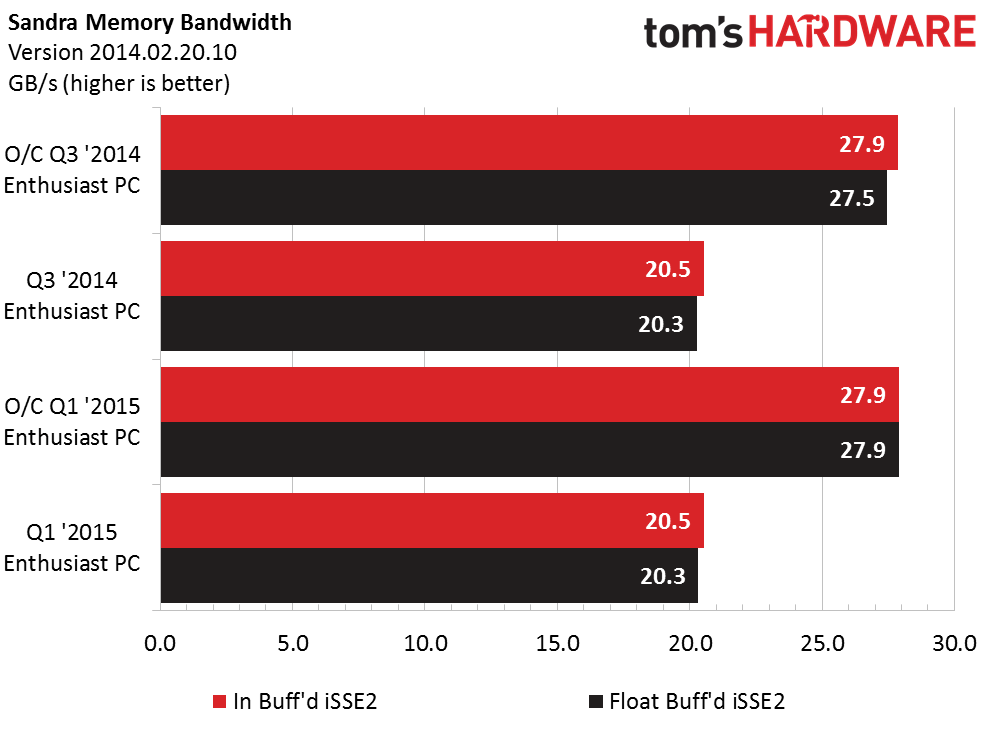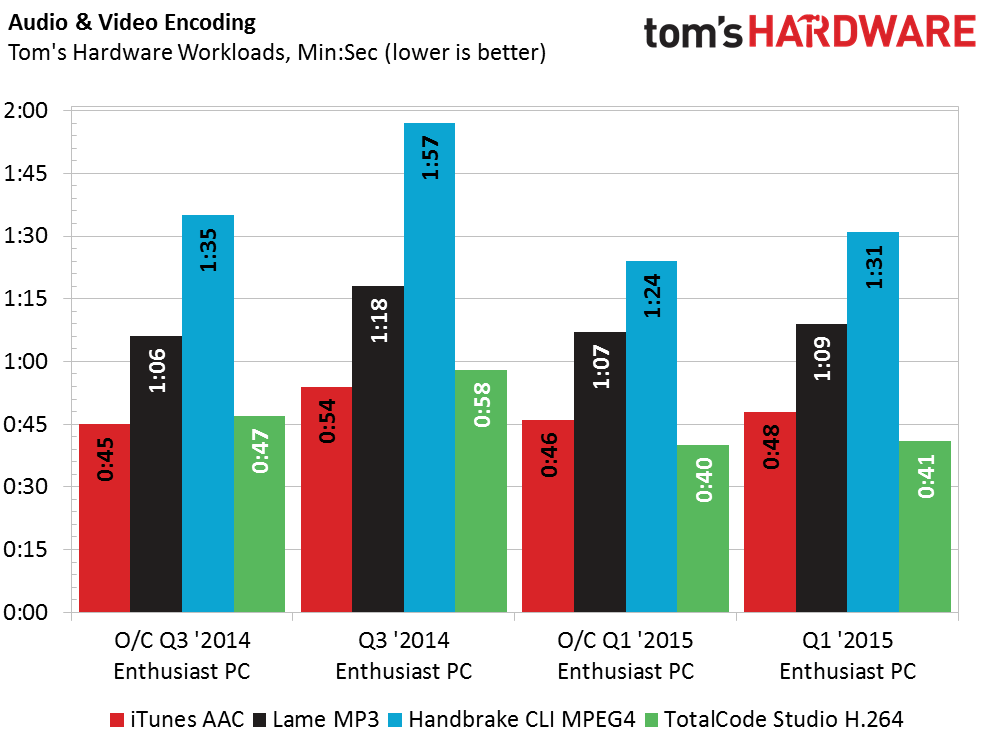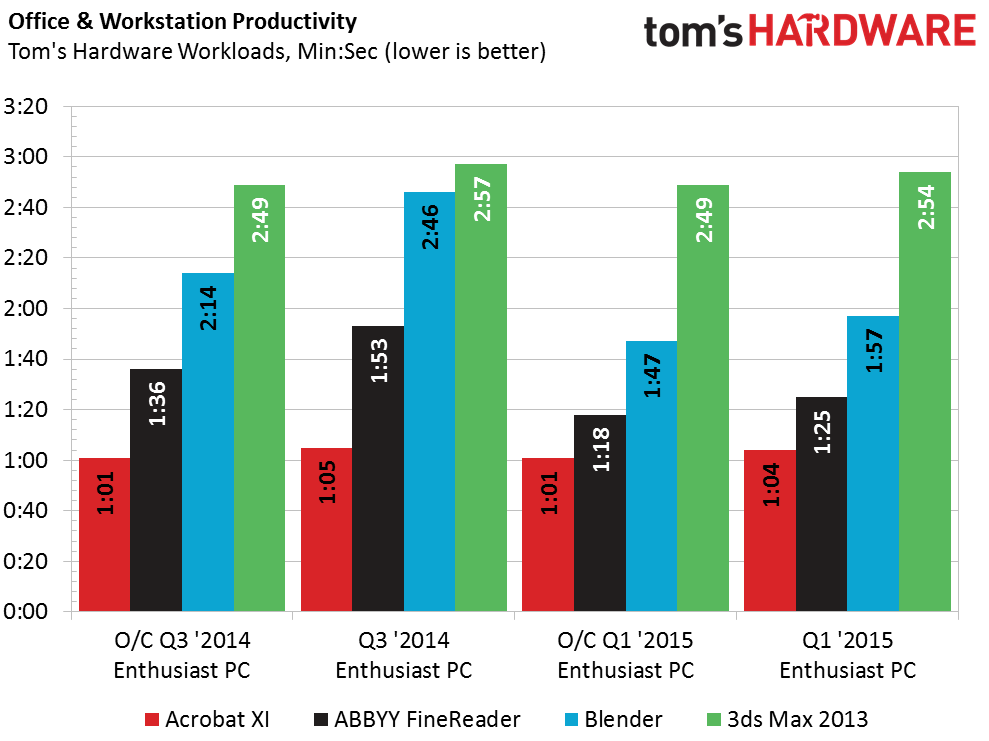System Builder Marathon Q1 2015: Mainstream Enthusiast PC
Results: Synthetics, Media Transcoding, Rendering And Productivity
Synthetics
We begin our benchmark analysis with a handful of synthetic tests designed to emphasize differences between the various subsystems that changed between the third quarter of last year and today's setup. I made significant changes to my host processor (Core i5-4690K to Core i7-4790K) and graphics card (GeForce GTX 770 to GeForce GTX 970), so we should see differences in multi-threaded and gaming benchmarks. Single-threaded tests dependent on clock rate may exhibit little to no difference.
3DMark exposes platform and graphics card performance; the new build excels in both regards, nearly doubling the scores.
PCMark mutes the graphics card's influence. However, this quarter's Core i7 has Hyper-Threading, which exerts a notable influence.
Hyper-Threading also has an impact on SiSoftware Sandra's Arithmetic module.
The Cryptography metric is affected by AES-NI, so performance is determined by the rate at which system memory can feed instructions into the CPU. Both PCs feature similar stock memory clocks and bandwidth, so there are no discernible differences between them.
As you can see, both systems sport similar peak memory bandwidth at 1600 MT/s (CAS 11) and 2133 MT/s (CAS 9).
Media Transcoding
The following audio- and video-oriented transcoding benchmarks are tied to processor performance. There are definitely differences in how they utilize CPUs with multiple cores, though. Our iTunes and LAME tests employ a single thread, giving us a good look at the per-core performance of each CPU. Meanwhile, TotalCode Studio and HandBrake leverage as many cores as they can get.
Get Tom's Hardware's best news and in-depth reviews, straight to your inbox.
HandBrake and TotalCode Studio are highly responsive to the addition of Hyper-Threading support, so that's where we see the biggest differences. On the other hand, iTunes and LAME are single-threaded tests, which don't benefit as much from the Core i7's advantages. In fact, the Core i5's 100MHz overclocked advantage allows it to complete our workload one second faster.
Rendering And Productivity
All of the tests on this page are fully optimized to utilize multi-core (and even multi-processor) configurations. When comparing the Core i5 and Core i7, we expect to see significant differences in the ABBYY and Blender results.
Our Adobe Acrobat workload runs on a single thread, while 3ds Max utilizes as many cores as we can throw at it.
Indeed, the Core i7 demonstrates huge advantages in ABBYY FineReader and Blender, while there's almost no difference in the Acrobat result. 3ds Max surprisingly doesn't favor the Core i7 by as much as we'd anticipate.
Current page: Results: Synthetics, Media Transcoding, Rendering And Productivity
Prev Page How We Tested Next Page Results: Adobe Creative Cloud And Compression ToolsDon Woligroski was a former senior hardware editor for Tom's Hardware. He has covered a wide range of PC hardware topics, including CPUs, GPUs, system building, and emerging technologies.
-
g-unit1111 Honestly I would go optical drive less and get a H440 or something similar. Was it a requirement to spend $50 on the blu-ray burner?Reply -
damric Dear God, why another junk Compucase PSU?Reply
And why a PNY SSD? Save the packaging for that. You will need it for RMA.
With a budget that large there is no room for parts with high failure rates. -
de5_Roy nice build. my only nitpick is about the motherboard. would choosing a xeon e3 12xx v3 have led to better mobo and/or gfx card and/or psu?Reply -
cknobman Waiting for the day one of you SBM folks take your panties off and skips the optical drive.Reply
We have reached the day and age where optical drives are really not necessary and just eat into budget for more useful things. -
des99 how does the math add up?Reply
$925 Performace hardware +
$240 case, os and optical $240
=$1165 -
pepsimtl I think cpu I5 K whill do the same job for gamer and least expensive :)Reply
This motherboard color is so ugly ( same color 1985 pc ) and all the component except for memory . Just look inside the computer depress me -
Onus Given the power numbers (which I think you know enough to have anticipated), even a 450W Rosewill Capstone would have sufficed. I just don't see an EVGA "B" series making it into an enthusiast build; ever.Reply
I also really don't like seeing 1.65V RAM. Perhaps 1.6V, but allowing for how different motherboards may tweak RAM for stability, already running at 1.65V seems like more of a risk to the Intel IMC than is worthwhile. I'd really prefer to keep at the standard 1.5V.

